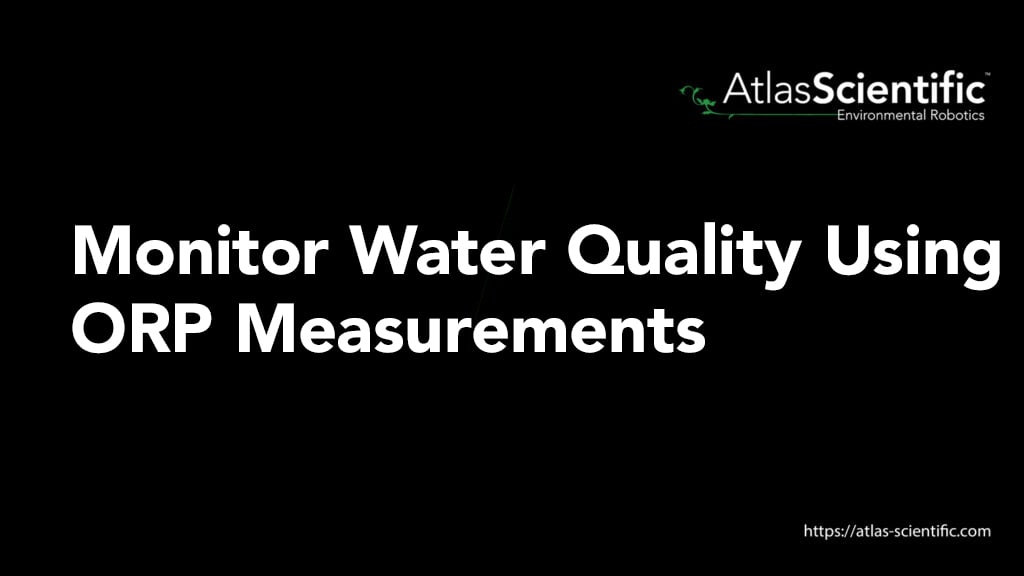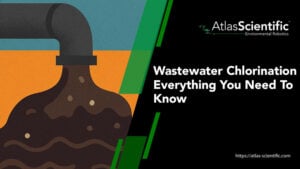Subtotal: $76.99

How To Reduce TDS Of Water?
Reverse osmosis is still a very good and popular way to reduce TDS, but there are many alternatives that might be better for your particular evil
Product Categories

High water quality depends on many factors both visible and invisible to the human eye, mostly invisible, unfortunately. However, due to advances in sensor technology, oxidation-reduction potential (ORP) provides an easy way to understand the sanitation level, and therefore cleanliness, of any water application.
Water quality is a spectrum that can be understood with more information on ORP, pH, conductivity, dissolved oxygen, and so on. For some applications, like wastewater treatment, there exists a need to monitor all these factors, but for some hobbyist applications (like small-scale hydroponics) you could potentially get away with one or two measurements—like ORP—to maintain high-quality water.
This article will focus primarily on ORP, ORP levels, and how to measure it for water in general so that you can apply it to any scenario (hydroponics, manufacturing, brewing, drinking water measurements, environmental sampling, etc). For more information on other water quality characteristics, like pH, dissolved oxygen, conductivity, visit the Atlas Scientific blog.
ORP is the electron exchange potential that relates to active oxidant or reductant, primarily oxidant in our discussion around high water quality. Oxidizing agents steal electrons from other molecules and reducing agents give up electrons to other molecules. Don’t worry too much about the details, but remember that oxidizing agents are the substances that provide the sanitation value and contribute to higher ORP values.
Substances like dissolved oxygen and chlorine will contribute to higher oxidation and higher ORP; these substances have higher electronegativity (oxidizing agents) and will normally pull electrons from other substances like unwanted contaminants and other bacteria. ORP is susceptible to other active ions and total dissolved solids (TDS) that do not contribute to sanitation, and in this way, ORP is not the cure for all water quality measurements. However, it provides a great signal of sanitation, water quality, and therefore creates warning signs to investigate drops in water quality.
The ORP characteristic is measured in millivolts (mV) by using ORP probes and sensors, with higher readings correlating to a more sanitary water system. ORP readings in the positive millivolts will correlate to an oxidative water state, or a more sanitary state, so negative readings (reductive state) will not be as common in the clean water quest. Realistically you should only encounter negative ORP readings in a laboratory setting, utilizing a lab-grade ORP sensor with high range and accuracy for extreme oxidizers and reducers.
Overall, ORP will give you a great understanding of the general water quality, with positive millivolt readings in the 650 mV to 750 mV range being ideal for water sanitation. This value depends on both naturally occurring and external chemicals used to balance water quality. Depending on your scenario and the goal ORP value, corrective actions will change because a natural stream will not require the level of sanitation that a backyard swimming pool does.
ORP is an extremely important water measurement to quickly determine overall water sanitation and the ability to stay clean. As discussed above higher ORP readings correlate to a higher concentration of oxidizing agents that keep the water clean from bacteria and other contaminant build-ups.
Elements like oxygen, bromine, and chlorine contribute heavily to a higher ORP level in the water and the increased breakdown of unwanted contaminants. As a result, higher ORP levels can be correlated with higher levels of water sanitation. So high ORP values are very important when understanding and maintaining high water quality, whether it be municipal water or manufacturing inputs.
At a minimum, drinking water needs to exist around 650 mV to be properly sanitized and safe for drinking. This ORP potential for swimming pools should increase to around 700 mV to 750 mV for continued safe use.
In this way, now that you understand the importance of high ORP values for clean drinking water, we will discuss common ORP probe measurements and increasing ORP levels to maintain clean water
ORP probes are very safe and easy to use, especially when using an ORP kit setup like the gravity analog ORP kit. If you are familiar with other probe measurements like pH you are already well prepared for measuring ORP.
An ORP probe works similarly to a combination pH probe but instead of measuring hydrogen ions, it measures the relative amount of electron activity as shown in the picture above. Since each ORP probe utilizes dual electrodes, one for reference and one for measuring the sample, the ORP probe must always be calibrated before use. Once calibrated, however, the measuring process is as simple as submerging the probe in water like the picture above.
Without calibration, your ORP meter will not provide reliable readings of ORP in the solution. Thankfully, calibration is fairly straightforward with the use of ORP calibration solution. Atlas Scientific provides a 225 mV calibration solution, as this value provides a common oxidative state since most water samples will be in the positive voltage range.
Other calibration solutions and powders can be created and/or purchased, just be sure to note the exact mV and accuracy of the calibration solution so that it aligns with the measurement accuracy you require.
It is best practice to gently rinse the ORP sensor with distilled water and then submerge it in the calibration solution to ensure sample-to-sample contamination does not occur. Once submerged, lightly stir the probe for about 30 seconds as readings stabilize. Once the readings have stabilized, run the calibration command and make sure the probe reads 225 mV or the correct mV reading for your calibration solution.
Now you are ready to measure ORP and immerse the probe in the sample water. As stated in the third step, repeat calibration between sampling unless the probe is placed for continuous monitoring.
Since most samples will be widely different, it is recommended to recalibrate and clean the probe between different test samples. Also, since the probe measures electrons, it is more susceptible to contaminant build-up on the probe tip due to attractive forces. To clean, gently scrub the probe tip—with materials no more abrasive than a toothbrush—alongside some diluted bleach or distilled water and your probe will be in top shape.
However, if continuous monitoring and submersion are occurring, like in a hydroponic tank, recalibration only needs to occur once a year for the first two years, then every six months after year two.
Additionally, ORP probes cannot dry out due to their fluid solution operating principle. This is not a worry for indefinite submersion and measurement setups. In the case of intermittent testing, be sure to keep the probe tip wet with ORP storage solution. The industrial probe from Atlas Scientific comes equipped with a probe-tip cap to easily store this solution and screw onto the ORP probe. For other probes, utilize the probe tip soaker bottle to avoid dry out and damage to your ORP probe.
Now that you know the importance of high ORP values for clean sanitary water, and how to measure them using ORP probes. Let’s discuss the process of increasing ORP in water to increase sanitation and overall water quality.
As discussed previously, high ORP values are attributed to oxidizing agents like dissolved oxygen, chlorine, bromine, and muriatic acid. Therefore depending on your scenario, add or increase one of these oxidizers and ORP values should increase.
In the case of natural water systems, or water that supports aquatic and plant life, dissolved oxygen will be the safest and most effective way to increase ORP and maintain healthy water for life. Refer to the 4 A’s in Atlas Scientific’s post about increasing dissolved oxygen levels in water: Aerate, Agitate, Aquatic Plants, Add O2 Gas.
Note: dissolved oxygen probes, or DO probes, are also available to monitor this water characteristic. And they come pre-calibrated, ready to use!
On the other hand, active chlorine concentration in swimming pools and wastewater treatment will be a large contributor to high ORP levels and more sanitary water. So add more chlorine, but avoid adding too much and creating uncomfortable swimming conditions (no higher than 800 mV ORP). Increased pH levels will also decrease ORP levels, so adding muriatic acid will help decrease pH and increase ORP. Proper care and monitoring should be taken when adding muriatic acid to swimming pools.
Other oxidizer additions will be useful to attain and maintain high water quality. The bottom line is to add more oxidizing agents, safely, and with proper monitoring before, during, and after the change process. In this way, you will safely increase ORP levels and have high water quality for any application.
To reiterate, as ORP values provide a relative level of sanitation in the water (with positive values being more sanitary), the best ORP value for drinking water is at least 650 mV. At 650 mV on the ORP scale, water will be adequately sanitized for safe consumption. It’s possible to check for this value in your home using an ORP probe to achieve accurate values.
To take it one step further, the 650 mV ORP threshold applies to other scenarios like hydroponics, brewing, or activities where you’d add clean water from the tap normally. In this way, ORP measurements can be used in any scenario to understand water quality. If you’re out to continually monitor a pool or water softener tank, make it easy and use an industrial grade ORP probe to accurately measure and monitor ORP with the ability to screw directly into piping.
Temperature is a non-intuitive player in ORP and DO. As the temperature increases, the ability of water to hold dissolved oxygen decreases and therefore decreases ORP levels. For this reason, one must be aware of comparing ORP measurements at different times of the day or different seasons.
Pressure and salt content (salinity) also affect DO levels, and in turn ORP levels. As pressure decreases so does DO, and as salinity increases DO will decrease. These factors are something to note if unexplained changes in DO or ORP occur, possibly during measurements over time or in a lab setting.
Lastly, high pH levels can decrease ORP quickly, especially in a pool setting where active chlorine will decrease as pH increases. Since chlorine is a large contributor to high ORP, the loss of chlorine will greatly reduce ORP levels.
Oxidation-reduction potential (ORP) is a fantastic measurement to determine high or low water quality of any application. These probes provide insight into the overall sanitation level (positive ORP readings in the 650-750 mV range are ideal for sanitation) and safe consumption.
ORP probes come in different grades from lab-grade ORP to industrial grade, depending on the level of accuracy and intensity of the measurement environment. Choosing which measurement is right for you will come down to your application intensity and frequency of measurement. For standard measurements every so often, use the consumer-grade ORP probe; for continuous monitoring in more extreme conditions, definitely choose the industrial-grade ORP probe, and so on.
Additionally, if you’d like to understand more about your water quality check out Atlas Scientific’s industrial pH/ORP/temperature probe to conduct three measurements with one probe. As discussed above, pH and temperature can also be key players in ORP levels.
If you are unsure exactly which ORP device will best suit your needs, or you would like to learn more about other water measurements like pH levels and electrical conductivity, do not hesitate to reach out to the world-class team at Atlas Scientific.






Reverse osmosis is still a very good and popular way to reduce TDS, but there are many alternatives that might be better for your particular evil

Wastewater chlorination adds chlorine compounds to wastewater that produce “free chlorine,” which destroys pathogens by damaging cell membranes, disrupting cellular respiration, and rendering enzymes non-functional.